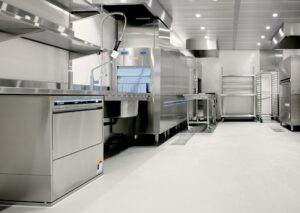Small appliances are an essential part of our daily lives, helping us with tasks such as cooking, cleaning, and personal grooming. However, like any other electronic device, small appliances can encounter issues that affect their performance and functionality. These issues can range from minor inconveniences to potential safety hazards. In this article, we will explore some common problems that small appliances may experience and discuss possible causes and solutions for each issue.
Key Takeaways
- Small appliances not turning on may be due to a faulty power source or a blown fuse.
- Strange noises coming from small appliances during use may indicate loose parts or a malfunctioning motor.
- Small appliances not heating up or cooling down as expected may be caused by a faulty thermostat or heating element.
- Faulty electrical connections in small appliances can cause power surges or short circuits, leading to potential safety hazards.
- Small appliances leaking or spilling during use may be due to a damaged seal or clogged drainage system.
Small appliance not turning on or powering up
One of the most frustrating issues that can occur with a small appliance is when it fails to turn on or power up. This can be caused by a variety of factors, including a faulty power source or a damaged cord. To troubleshoot this issue, it is important to first check the power source. Ensure that the outlet is functioning properly by plugging in another device or using a voltage tester. If the outlet is working fine, then the problem may lie with the appliance’s power cord. Inspect the cord for any visible damage or fraying. If there is damage, it may be necessary to replace the cord.
Strange noises coming from small appliance during use
Another common issue that small appliances may experience is strange noises during operation. These noises can range from rattling and grinding to buzzing and squeaking. Unusual sounds can be an indication of a problem with the motor, fan, or other internal components of the appliance. It is important to address these sounds promptly to prevent further damage. Start by checking for any loose parts or debris that may be causing the noise. If the noise persists, it may be necessary to disassemble the appliance and inspect the internal components for any signs of damage or wear.
Small appliance not heating up or cooling down as expected
When a small appliance fails to heat up or cool down as expected, it can greatly impact its effectiveness and efficiency. This issue can be caused by a variety of factors, including a faulty thermostat, heating element, or cooling system. To troubleshoot this issue, start by checking the temperature settings on the appliance. Ensure that they are set correctly and adjust if necessary. If the temperature settings are correct, then the problem may lie with the internal components. It may be necessary to replace the thermostat, heating element, or cooling system to restore proper functionality.
Faulty electrical connections in small appliance
Faulty electrical connections can pose a serious safety hazard and should be addressed promptly. This issue can occur due to loose or damaged wires, faulty switches, or malfunctioning circuit boards. To troubleshoot this issue, it is important to first unplug the appliance and inspect the electrical connections for any signs of damage or loose wires. If any issues are found, it may be necessary to repair or replace the affected components. It is important to note that electrical repairs should only be performed by a qualified professional to ensure safety.
Small appliance leaking or spilling during use
Leaking or spilling is a common issue that can occur with small appliances such as coffee makers, blenders, and dishwashers. This issue can be caused by a variety of factors, including a faulty seal, cracked container, or clogged drain. To troubleshoot this issue, start by inspecting the appliance for any visible signs of damage or wear. Check the seals and containers for cracks or leaks. If any issues are found, it may be necessary to replace the affected parts. Additionally, regularly cleaning and maintaining the appliance can help prevent clogs and buildup that can lead to leaks.
Small appliance producing unusual smells or odors
Unusual smells or odors coming from a small appliance can be a sign of a problem that needs to be addressed. These smells can range from burning and electrical to moldy or rotten odors. The cause of these smells can vary depending on the appliance. For example, a burning smell may indicate a problem with the motor or wiring, while a moldy odor may indicate a buildup of bacteria or mold. It is important to identify and address these smells promptly to prevent potential hazards and maintain hygiene. Start by cleaning the appliance thoroughly and checking for any visible signs of damage or malfunction. If the smell persists, it may be necessary to seek professional assistance.
Small appliance experiencing issues with buttons or controls
Issues with buttons or controls can greatly impact the usability and functionality of a small appliance. This issue can occur due to a variety of factors, including wear and tear, dirt or debris buildup, or faulty wiring. To troubleshoot this issue, start by cleaning the buttons and controls thoroughly to remove any dirt or debris that may be causing them to stick or malfunction. If the issue persists, it may be necessary to replace the affected buttons or controls. Additionally, it is important to use the buttons and controls properly and avoid excessive force or rough handling to prevent damage.
Small appliance showing signs of wear and tear
Over time, small appliances can show signs of wear and tear due to regular use. This can include scratches, dents, and worn-out parts. While these issues may not affect the functionality of the appliance immediately, they can lead to further damage if left unaddressed. Regular maintenance and replacement of worn parts are essential to ensure optimal performance and longevity of the appliance. Inspect the appliance regularly for any signs of wear and tear and replace any damaged or worn-out parts as needed.
Small appliance not functioning properly after cleaning or maintenance
Cleaning and maintenance are important for keeping small appliances in good working condition. However, if not done properly, they can cause issues with the appliance’s functionality. This can include water damage from improper cleaning techniques or misalignment of internal components after disassembly for maintenance. To prevent these issues, it is important to follow the manufacturer’s instructions for cleaning and maintenance. Use the recommended cleaning products and techniques, and ensure that all components are properly reassembled after maintenance.
Small appliance displaying error messages or warning lights
Many modern small appliances are equipped with error messages or warning lights to alert users of potential issues. These messages or lights can indicate a variety of problems, including overheating, low battery, or malfunctioning components. It is important to understand these error messages and take appropriate action. Consult the appliance’s manual or contact the manufacturer for guidance on how to address the specific issue indicated by the error message or warning light.
In conclusion, small appliances can encounter a variety of issues that affect their performance and functionality. From not turning on to producing unusual smells or displaying error messages, these issues can range from minor inconveniences to potential safety hazards. It is important to address these issues promptly to ensure the safety and effectiveness of the appliance. Regular maintenance, proper use, and timely repairs are essential for keeping small appliances in good working condition and prolonging their lifespan. By understanding common issues and their possible causes and solutions, users can troubleshoot and resolve problems with their small appliances effectively.
What are Some Examples of Common Small Appliance Issues?
When it comes to common appliance problems understanding, some examples of small appliance issues include a malfunctioning coffee maker, a toaster that doesn’t toast evenly, a blender with a broken blade, and a microwave that stops heating. These issues can often be fixed with some troubleshooting or minor repairs.
FAQs
What are small appliances?
Small appliances are electrical devices that are designed to perform specific tasks in the home. They are typically portable and can be easily moved from one location to another.
What are some common small appliance issues?
Some common small appliance issues include overheating, power failure, broken or damaged cords, malfunctioning switches, and clogged filters. Ignoring these problems can lead to more significant damage or even pose safety hazards. Therefore, understanding the importance of diagnosing appliance issues early can save both time and money in the long run. Regular maintenance and prompt attention to small glitches often prevent costly repairs and extend the lifespan of the appliances.
How can I prevent small appliance issues?
To prevent small appliance issues, it is important to read and follow the manufacturer’s instructions carefully. Regular cleaning and maintenance can also help to prevent issues from occurring.
Can small appliance issues be repaired?
In many cases, small appliance issues can be repaired. However, it is important to have repairs done by a qualified professional to ensure that the appliance is safe to use.
When should I replace a small appliance?
Small appliances should be replaced when they are no longer functioning properly or when they pose a safety risk. It is important to replace appliances that are damaged or have broken parts, as they may not work as intended and could cause injury or damage to your home.



